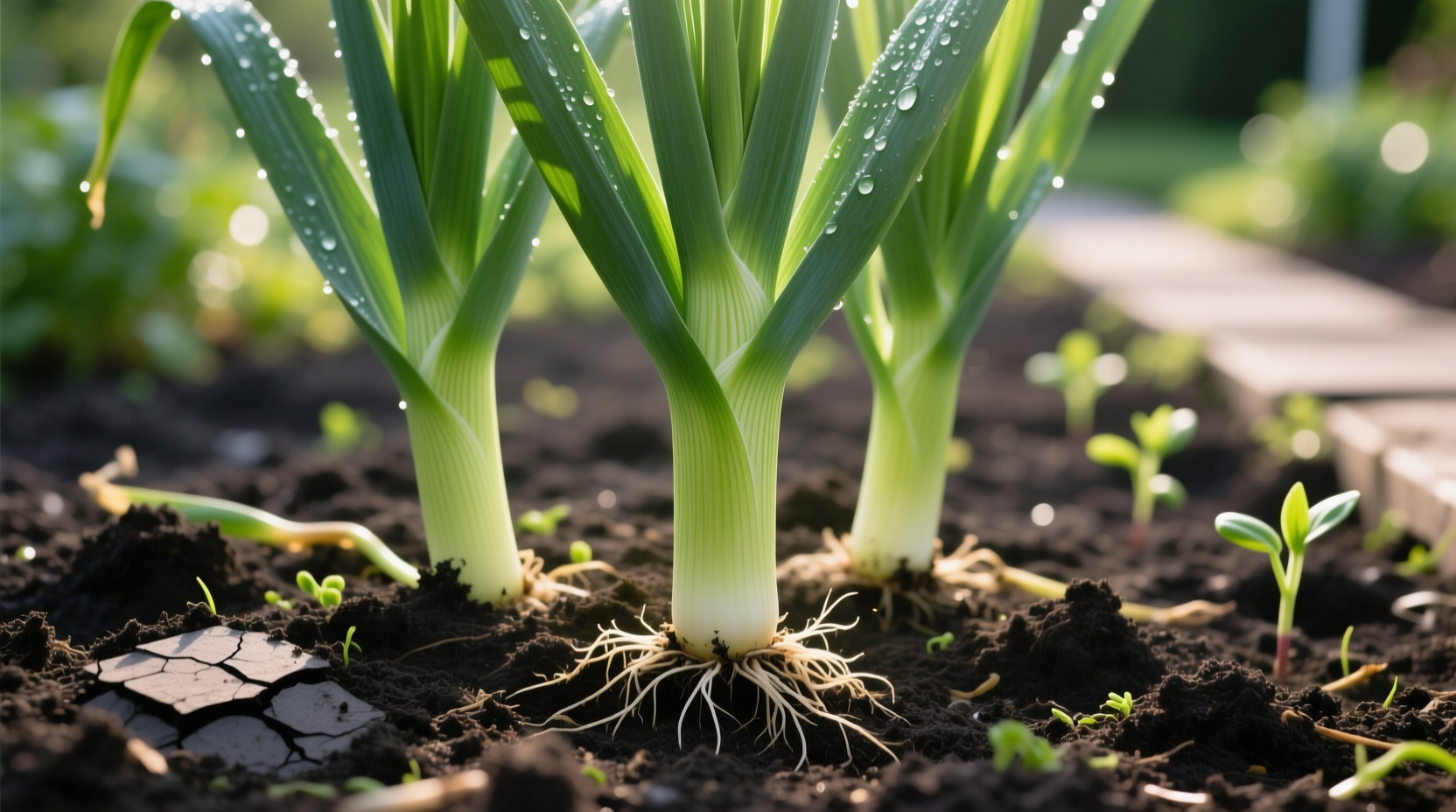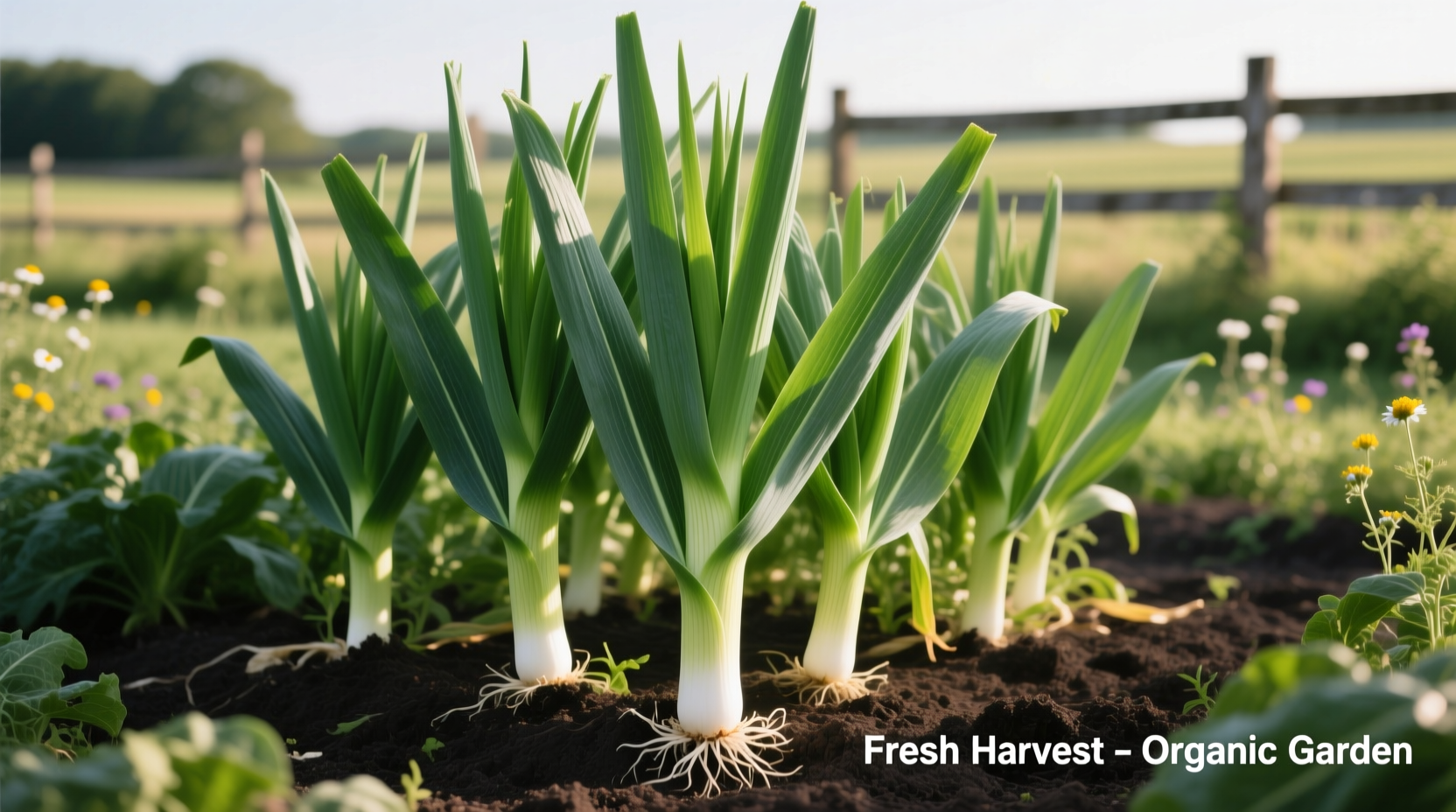Why Grow Leeks? Understanding Their Garden Value
Leek plants (Allium ampeloprasum var. porrum) offer gardeners a versatile, cold-hardy vegetable that bridges the gap between onions and garlic in flavor profile. Unlike their pungent cousins, leeks develop a delicate, sweet taste when cooked properly, making them essential for soups, stews, and gourmet dishes. Homegrown leeks typically outperform store-bought varieties in both flavor complexity and freshness, with proper cultivation yielding harvests from late summer through early spring depending on planting schedule.
Planning Your Leek Growing Journey
Successful leek cultivation begins with strategic planning. These cool-season crops perform best in USDA hardiness zones 3-9, tolerating temperatures as low as 10°F when properly mulched. Consider your local climate when selecting varieties and planting dates to maximize your harvest potential.
| Leek Variety Type | Best For | Days to Maturity | Cold Tolerance |
|---|---|---|---|
| Early Season (King Richard) | Spring/summer harvest | 75-90 days | Moderate |
| Main Crop (Lincoln) | Fall harvest | 120-135 days | High |
| Winter (Musselburgh) | Winter/spring harvest | 140-160 days | Very High |
According to the USDA Agricultural Research Service, leeks have evolved from wild Mediterranean plants through centuries of selective breeding. Modern varieties maintain the hardiness of their ancestors while developing improved disease resistance and larger edible stalks. The Royal Horticultural Society notes that proper variety selection accounts for 40% of successful leek cultivation outcomes.
Step-by-Step Planting Process
Follow this proven planting sequence for optimal results:
- Seed Starting (8-10 weeks before last frost): Sow seeds ¼ inch deep in seed trays with sterile potting mix. Maintain soil temperature at 60-70°F for best germination.
- Transplant Preparation: When seedlings reach pencil thickness (about 6-8 inches tall), trim roots and tops by one-third to encourage new growth.
- Hole Planting Method: Dig 6-inch deep holes spaced 6-8 inches apart. Place one seedling per hole and fill with soil as plants grow, blanching the lower portion for tender texture.
- Direct Seeding Option: For later varieties, sow seeds directly in garden ¼ inch deep after soil reaches 50°F, thinning to final spacing when plants establish.

Essential Care Practices for Healthy Leeks
Consistent care determines your harvest quality. Leeks require specific attention during critical growth phases:
Watering Requirements
Maintain consistent soil moisture at 1-1.5 inches per week. Drought stress causes premature bolting while excessive water promotes fungal diseases. The University of California Cooperative Extension recommends morning watering to reduce disease pressure.
Fertilization Schedule
Apply balanced fertilizer (10-10-10) when transplanting, then side-dress with nitrogen-rich fertilizer every 3-4 weeks. Avoid excessive nitrogen late in the season which can reduce storage quality.
Blanching Technique
For premium quality with longer white shafts, gradually mound soil around plants every 2-3 weeks, leaving only the top third of green leaves exposed. This process, called "hilling," prevents greening of the lower stalk and improves tenderness.
Harvesting and Storage Guidelines
Timing your harvest correctly ensures peak flavor and texture:
- Early varieties: Harvest when shafts reach 1 inch diameter (July-August)
- Main crop varieties: Harvest September-November before hard frost
- Winter varieties: Harvest December-March as needed
Use a garden fork to carefully loosen soil before pulling plants. For extended storage, keep harvested leeks in a cool, humid environment (32-35°F with 95% humidity) where they'll remain fresh for 2-3 months. The USDA National Institute of Food and Agriculture confirms proper storage conditions can extend leek shelf life by up to 50% compared to room temperature storage.
Troubleshooting Common Leek Problems
Even experienced gardeners encounter these frequent leek challenges:
Pest Management
Leek Moth: Look for small holes in leaves and tunneling in stalks. Prevent with row covers and rotate crops annually. The Cornell University Department of Entomology reports that crop rotation reduces leek moth incidence by 70%.
Thrips: Identified by silvery streaks on leaves. Control with insecticidal soap sprays every 5-7 days during dry periods.
Disease Prevention
Blue Mold: Appears as blue-gray fuzz on stored leeks. Prevent by ensuring complete drying before storage and maintaining proper humidity levels.
Rust: Orange pustules on leaves. Remove affected leaves immediately and avoid overhead watering to reduce spread.
Environmental Challenges
Bolting: Caused by temperature fluctuations or planting oversized transplants. Prevent by using appropriate varieties for your climate zone and maintaining consistent moisture.
Split Stalks: Result from irregular watering. Implement drip irrigation for consistent moisture delivery.
Maximizing Your Leek Harvest Success
By understanding the complete growth timeline from seed to harvest, you'll develop intuition for your plants' needs. Remember that leeks are heavy feeders requiring consistent nutrients, and their slow initial growth makes weed control essential during early development stages. With proper planning and attention to critical growth phases, your leek plants will reward you with months of flavorful harvests that outperform store-bought alternatives in both taste and nutritional value.











 浙公网安备
33010002000092号
浙公网安备
33010002000092号 浙B2-20120091-4
浙B2-20120091-4